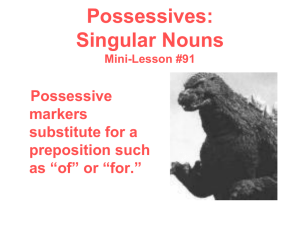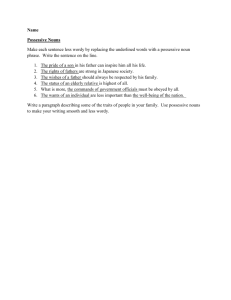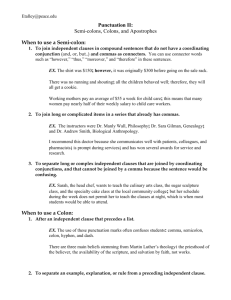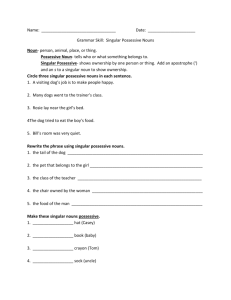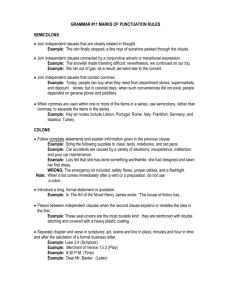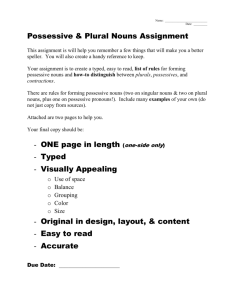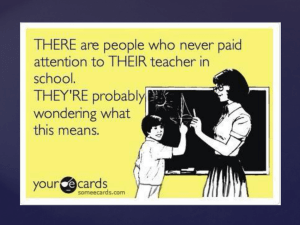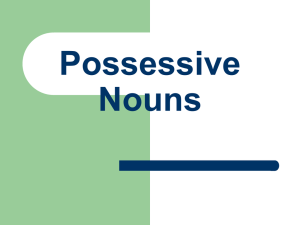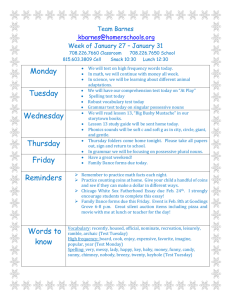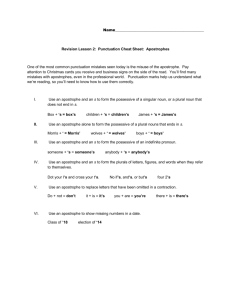Writing Tips
advertisement
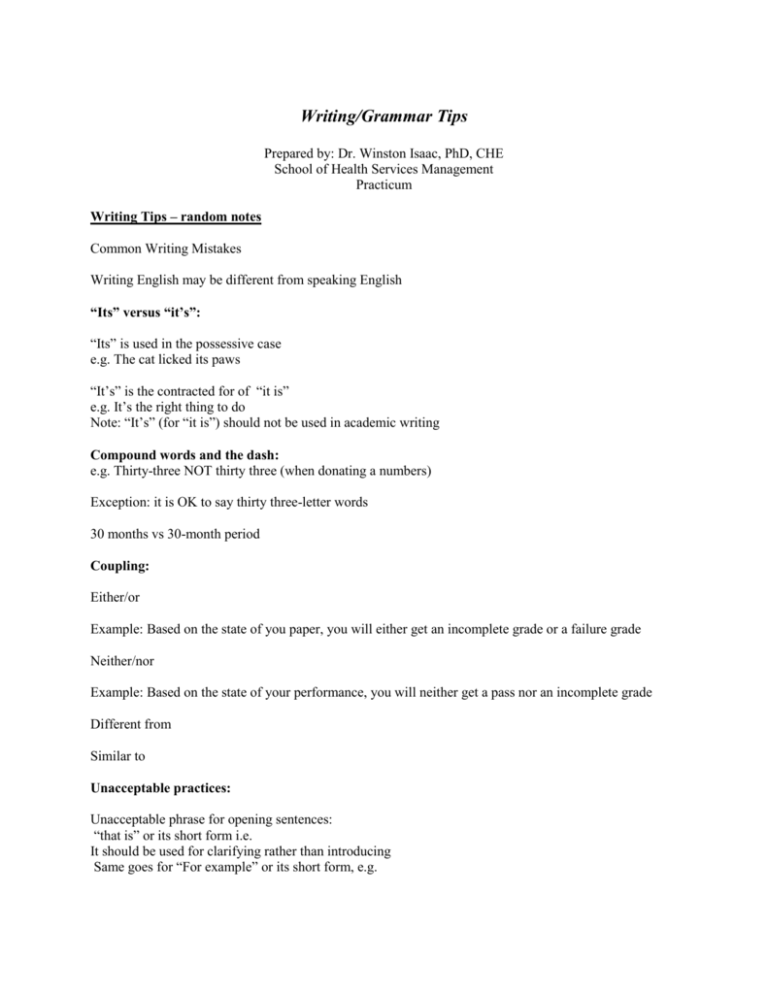
Writing/Grammar Tips Prepared by: Dr. Winston Isaac, PhD, CHE School of Health Services Management Practicum Writing Tips – random notes Common Writing Mistakes Writing English may be different from speaking English “Its” versus “it’s”: “Its” is used in the possessive case e.g. The cat licked its paws “It’s” is the contracted for of “it is” e.g. It’s the right thing to do Note: “It’s” (for “it is”) should not be used in academic writing Compound words and the dash: e.g. Thirty-three NOT thirty three (when donating a numbers) Exception: it is OK to say thirty three-letter words 30 months vs 30-month period Coupling: Either/or Example: Based on the state of you paper, you will either get an incomplete grade or a failure grade Neither/nor Example: Based on the state of your performance, you will neither get a pass nor an incomplete grade Different from Similar to Unacceptable practices: Unacceptable phrase for opening sentences: “that is” or its short form i.e. It should be used for clarifying rather than introducing Same goes for “For example” or its short form, e.g. Tense following “if” If I were given to choose No Dangling participles: Ending sentences with - in, with e.g “Words with which to open a sentence” vs “words that you open sentence with” Pleural words vs possessive tense Boy ----boys – pleural; while boy’s is possessive tense Faulty agreements – a verb should always agree in number with its subject Example: The increase in the fares for students was expected Singular indefinite pronouns: anyone, each, everybody, everyone, neither, nobody, no one, none Collective nouns: family, government, committee, minority, herd, army (usually singular until joined together) Faulty pronoun agreement: a pronoun should agree in number and person with the noun to which it refers: Examples: If a student needs more information, he/she should ask at the office If students need more information, they should ask at the office Squinting modifiers: a squinting modifier creates ambiguity by seeming to look two or more ways at once: Example: She delivered a talk about her trip to the Arctic, which was long and colourful Vs She delivered a long, colourful talk about her trip to the Arctic BASIC PRINCIPLES OF PUNCTUATION Use a comma between two independent clauses linked by a coordinating conjunction – and, but, for, nor, or so, still, yet Example: He wore his heavy scarf, and his coat came down to his knees Use commas to link terms in a series Example: She bought a cat, a geranium, a bicycle, and a catamaran Use commas to mark an interruption (which often provides additional but inessential information). The rule – two commas or none Example: His request which is reasonable, will be granted. Use parentheses to make a somewhat more pronounced interruption than commas (The interruption may again provide additional but inessential information) Example: My aunt (my mother’s older sister) owns twelve beauty parlors. Use a dash to make an even more pronounced interruption than commas or parentheses, and to stress a word or phrase. Example: He got what he deserved – a failed grade Use a semicolon to link closely related independent clauses. Example: Her future looks promising; she has been asked to submit her resume for the senior analyst position Use a colon to introduce a series, an important clarifying detail, or for a formal introduction to a direct quotation. Examples: The results of the poll are: ten in favour, eight opposed and two “don’t knows” She was ruled by a single ambition: to get the BHA degree Jane confirms our feeling about the School of HSM: “It provides excellent healthcare management preparation”. Add an apostrophe followed by “s” to form the possessive singular of nouns Add an apostrophe, with no following “s” to form the possessive pleural of most nouns – students’ final reports Add an apostrophe followed by “s” to form the possessive case for indefinite pronouns: One’s; anybody’s, someone else’s Others: Watch out for run-on sentences. When in doubt use shorter sentences Use adverbs and adjectives sparingly: “significant”, “major”, “interesting”, “rather”, “very”, “extremely”, “impressively”, Use plain English Watch the length of paragraphs Flow Proper use of : although, but, by contrast, however, nevertheless, on the other hand (to show contrast) Use the right word – “concept” vs “conception”; affect vs effect; Understand the words you use “The reason is because…….” - NO …The reason is that RULES ABOUT RECOMMENDATIONS: They must be clear and crisp It is OK to have an enhancement following each recommendation but they must not go on forever Use numbers or bullet points (preferably numbers) They must come from the study or supported by the literature Categories of recommendations are OK REFERENCING: Using APA . Refer to Publication Manual of the American Psychological Association Opening a sentence with Author’s name or referencing the author within the sentence, place the year of the work in parenthesis…. Make sure spelling of authors’ names is consistent (in the body of the document and in the References Proper use of “et al.”; first you reference the full list of authors (of the same article) and in subsequent references in the body of the document, you use the first author’s name followed by et al. (there is a period after al).
